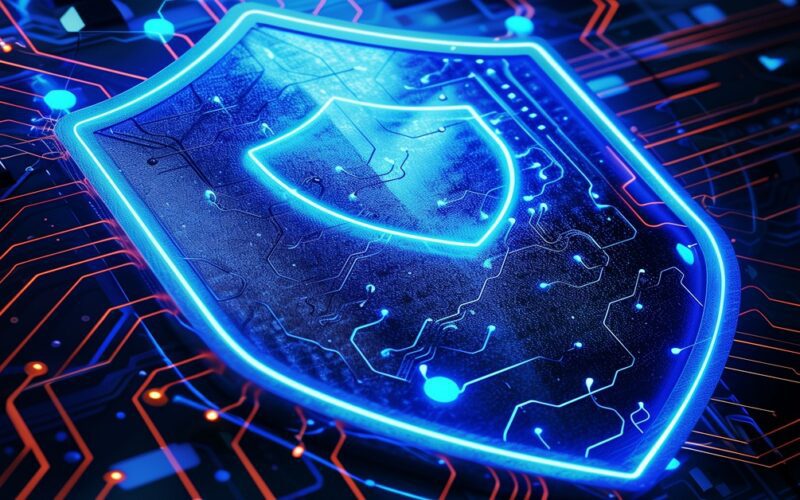Summary: The AI in cybersecurity market is rapidly expanding, driven by the need for advanced threat detection and response. This blog examines current trends, challenges such as adversarial attacks and data privacy, future prospects like autonomous systems, and the evolving job landscape as AI creates new roles within the industry.
Introduction
The integration of Artificial Intelligence (AI) into cybersecurity is transforming how organisations protect their digital assets. As cyber threats become increasingly sophisticated, the demand for AI-driven solutions is surging.
This growth is fueled by the rising complexity of cyber threats, increased adoption of cloud services, and the need for real-time threat detection capabilities.
AI technologies, such as Machine Learning (ML) and natural language processing (NLP), have gained traction to protect, detect and respond to threats. The exponential rise in cyberattacks on high-tech companies, defence, and government agencies has underscored the need for advanced AI in cybersecurity.
This blog will explore the trends shaping the AI in the cybersecurity market, the challenges faced by organisations, future prospects, and how this evolution impacts job scenarios and creates new opportunities.
Read More: How Can AI and Data Protection Work Together
Market Overview
The global AI in cybersecurity market was valued at approximately USD 22.4 billion in 2023 and is projected to reach USD 60.6 billion by 2028, growing at a compound annual growth rate (CAGR) of 21.9% during this period. The rising complexity of cyber threats, increased adoption of cloud services, and the need for real-time threat detection capabilities fuel this growth.
Trends in AI Cybersecurity
AI is revolutionising the cybersecurity landscape by enhancing threat detection, automating responses, and improving overall security measures. Key trends include real-time monitoring, Machine Learning integration, and the adoption of zero-trust architectures, all aimed at combating increasingly sophisticated cyber threats effectively.
Real-Time Threat Detection
Organisations are increasingly adopting AI technologies for real-time threat detection. Traditional security measures often lag behind sophisticated attacks, making it crucial to implement proactive solutions. AI algorithms can analyse vast amounts of data to identify patterns and anomalies indicative of potential threats, enabling quicker responses to security incidents.
Machine Learning and Behavioural Analytics
Machine Learning (ML) is at the forefront of AI applications in cybersecurity. By leveraging historical data, ML models can learn normal behaviour patterns within a network and detect deviations that may signify a breach. Behavioural analytics enhances this capability by focusing on user behaviour, allowing for more accurate identification of insider threats and compromised accounts.
Automation of Security Processes
Automation is becoming a key trend in cybersecurity as organisations seek to streamline their security operations. AI-powered tools can automate routine tasks such as log analysis, threat hunting, and incident response, freeing up security professionals to focus on more strategic initiatives. This not only improves efficiency but also reduces the risk of human error.
Integration with Existing Security Frameworks
AI solutions are increasingly being integrated with existing security frameworks and tools. Organisations are looking for ways to enhance their current systems rather than replace them entirely. This hybrid approach allows businesses to leverage AI capabilities while maintaining their established security protocols.
Zero-Trust Architecture
The zero-trust model is gaining traction as organisations recognize the need for stringent access controls. AI plays a crucial role in implementing zero-trust principles by continuously verifying user identities and monitoring access patterns to ensure that only authorised individuals can access sensitive data.
Read More: How Artificial Intelligence Boost Your Small Business
Challenges Facing AI in Cybersecurity
As organisations increasingly adopt Artificial Intelligence (AI) to bolster their cybersecurity defences, they encounter several significant challenges that must be addressed to ensure effective and secure implementation. These challenges can be categorised into various areas, including technical and operational hurdles, security and privacy concerns, ethical issues, and skill gaps.
Adversarial Attacks
Cybercriminals are also leveraging AI to enhance their attacks, creating a cat-and-mouse game between defenders and attackers. Adversarial AI involves manipulating algorithms to evade detection or exploit vulnerabilities within AI systems themselves. Organisations must remain vigilant against these tactics and continuously update their defences.
Data Privacy Concerns
AI systems often require access to vast amounts of data, raising concerns about data privacy and compliance with regulations such as GDPR. To ensure that sensitive information is handled appropriately while still allowing AI systems to function effectively, organizations must implement robust data protection measures.
Bias in AI Algorithms
AI algorithms can inherit biases present in their training data, leading to false positives or negatives in threat detection. Ensuring that training datasets are diverse and representative is crucial for minimising bias and enhancing the accuracy of AI-driven cybersecurity solutions.
Skill Shortages
The rapid growth of AI in the cybersecurity market has outpaced the availability of skilled professionals capable of implementing and managing these technologies. Organisations face challenges in finding qualified candidates who possess both cybersecurity expertise and knowledge of AI technologies.
Future Prospects
The future of AI in cybersecurity is poised for significant advancements, driven by the increasing complexity of cyber threats and the need for more robust defence mechanisms.
As organisations continue to face sophisticated attacks, the integration of AI technologies will play a pivotal role in shaping the cybersecurity landscape. Here are some key trends and prospects that will define the future of AI in this domain.
Autonomous Cybersecurity Systems
We can expect the emergence of fully autonomous cybersecurity systems capable of detecting, responding to, and mitigating threats without human intervention. These systems will leverage advanced Machine Learning algorithms to make real-time decisions based on evolving threats.
Enhanced Threat Intelligence
AI will play a pivotal role in threat intelligence by processing vast amounts of data from various sources to identify emerging threats. Organisations will better anticipate cyberattacks and proactively strengthen their defences.
Quantum Computing Implications
As quantum computing advances, it poses both challenges and opportunities for cybersecurity. While quantum computers could potentially break existing encryption methods, AI may assist in developing quantum-resistant encryption techniques that safeguard sensitive data.
Read More: Use of AI and Big Data Analytics to Manage Pandemics
Impact on Job Scenarios
The integration of Artificial Intelligence (AI) into the cybersecurity landscape is reshaping job scenarios, creating both opportunities and challenges for professionals in the field. As organisations increasingly adopt AI-driven solutions to enhance their security measures, the nature of cybersecurity roles is evolving.
Creation of New Job Roles
As organisations adopt AI-driven solutions, new job roles are emerging that focus on managing these technologies:
- AI Security Analysts: Professionals responsible for overseeing the implementation and effectiveness of AI-based security solutions.
- Data Scientists: Experts who analyse large datasets to develop Machine Learning models that enhance threat detection capabilities.
- Ethical Hackers: Specialists who test the effectiveness of AI-driven security measures by attempting to breach systems using advanced tactics.
Augmentation of Existing Roles
Rather than replacing human jobs, AI augments existing roles within cybersecurity teams:
Security Analysts: With automation handling routine tasks like log analysis, analysts can focus on strategic decision-making and incident response.
Incident Responders: Enhanced threat intelligence provided by AI allows responders to prioritise incidents based on severity and potential impact.
Increased Demand for Training Programs
As organisations adopt new technologies, the demand for training programs will grow. These programs will equip professionals with the skills needed to work with AI in cybersecurity. Educational institutions and training providers will need to adapt their curricula to address this evolving landscape.
Conclusion
The integration of Artificial Intelligence into cybersecurity is reshaping how organisations protect their digital assets against an ever-evolving threat landscape. While challenges such as adversarial attacks, data privacy concerns, and skill shortages persist, the potential benefits far outweigh these obstacles.
As the market continues to grow at an impressive rate, driven by trends like real-time threat detection and automation, new job opportunities will emerge, and AI technologies will augment existing roles.
Organisations must stay proactive in addressing challenges while embracing opportunities from AI-driven cybersecurity solutions in this transformative landscape.
Frequently Asked Questions
What is the Current Market Size for AI In Cybersecurity?
The global AI in cybersecurity market reached USD 22.4 billion in 2023. It is projected to grow to USD 60.6 billion by 2028.
What are Some Challenges Associated with Implementing AI In Cybersecurity?
Key challenges include adversarial attacks, data privacy concerns, bias in algorithms, and a shortage of skilled professionals capable of managing these technologies.
How Does AI Impact Job Opportunities in Cybersecurity?
The integration of AI creates new job roles focused on managing these technologies while augmenting existing roles within security teams through automation and enhanced threat intelligence capabilities.



